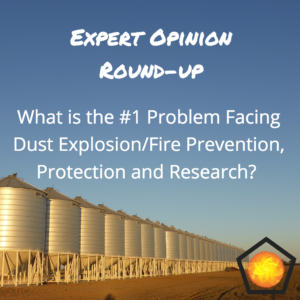
What problems are fellow combustible dust practitioners and researchers running into and how can we fix them?
One of the biggest issues in dust explosion and fire prevention is lack of information transfer in the community. This can lead to increased risk of industrial disasters worldwide, lack of funding for regulating and government agencies, and isolation of individual research groups.
The purpose of this round-up post is to get a global view of the main problems affecting our industry today. The goal is to give anyone the ability to connect with lead experts in their area, and contribute to the discussion on where improvements can be made.
The two survey questions below were sent to 55 individuals from industry and academia resulting in 30 responses across 12 countries. This collection gives a broad cross section of the issues we are facing and will hopefully lead to improving our ability to reduce the global impact of combustible dust hazards.
Question #1:
What is the #1 problem facing industries handling combustible dust?
Question #2:
What is the #1 difficulty in dust explosion/fire research?
The following gives a summary of the individual responses and background information on the contributors. Please share the results with anyone you think would be interested in better understanding the difficulties in the combustible dust community.
How Can you Help?
If you would like to get involved and help spread the word of combustible hazards you can do one (or multiple) of the following:
- Share the post with your professional contacts or using the social buttons below
- Post your own response in the comments section
- Email me directly to reach out ([email protected])
- Join the myDustExplosionResearch.com community
Response Organization
The post is organized geographically and the responses can be accessed through the table given in the following section. In addition, each responder is identified using a combination of the following icons:

which represent industry equipment and/or service provider,

scholarly researcher, and/or

myDustExplosionResearch.com newsletter member, respectively.
Response Table of Contents
Dr. Ashok Dastidar
Jeffrey Nichols
Jérôme Taveau
Regis Bauwens
Dr. Robert Zalosh
Rocco Mariani
Dr. Russel Ogle
Scott Boersma
Dr. Scott Davis
Dr. Sam Mannan
Canada
Dr. Luc Bauwens
Luke Morrison
Martin Clouthier
Dr. Paul Amyotte
Jim Munro
Ken Schafer
Robert Hurnall
The Netherlands
Adrie van Beek
Dr. Arief Dahoe
Kor KapmaNorway
Dr. Rolf Eckhoff
Dr. Trygve Skjold
Combustible Dust Expert Responses
United States
Dr. Ashok Dastidar

Question #1: “The #1 problem facing industry is the realization that dust can be combustible. If we were to talk about gasoline or acetone or ethanol people are well aware of the flammable nature of these liquids, and take precautions in the work place. However, if we mention cornstarch, sugar, coffee, sawdust, resin powder, and aluminum, very few people are aware that there are fire and explosion hazards associated with their handling.
I think part of the complexity is that these are common items that are explosible under special circumstances. Mainly, fine particle sizes and low moisture levels. As such they overlook the possibility of a hazard; if they don’t know it can go “Kaboom” they won’t take precautions.
A close second would be the belief that dust explosion and fire avoidance is expensive. The single most important mitigation activity a plant operator can take is housekeeping! Keep fugitive dust levels low and you can avoid a plant-wide explosions and fires. Avoid process leaks and you can minimize the generation of fugitive dust. Eliminating the Fuel from the Fire-Triangle or Explosion-Pentagon will go a long way to mitigating the risk.”
Question #2: “The #1 difficulty in dust explosion and fire research is obtaining standardized reference material. If we want to study gas explosions we can obtain analytical grade methane, propane, hydrogen etc., that is the same the world over. The combustion phenomenon is occurring with uniform molecular-scale participants and the characteristics observed are for the most part, properties of the material.
As soon as you move to studying “dusts” you are looking at complicating factors of particle size distribution, morphology, composition and moisture level – you have moved away from molecular-scale actors. As a result, with “dusts” you will have batch-to-batch variation which add a layer of complexity when analyzing and comparing results. Having a half dozen “standard” dusts would help research. The explosion/combustion properties under study can then be reproduced and replicated by various labs around the globe. This would eliminate the potential problem where the observed combustion characteristic is an artifact of the specific sample under test or the apparatus setup, and not an inherent material property.”
About Dr. Dastidar: Ashok is Vice President of Dust & Flammability Testing and Consulting Services at Fauske & Associates in Chicago, Illinois and holds a MASc and PhD in Chemical Engineering from Dalhousie University. Dr. Dastidar is a Fellow Engineer at the Westinghouse Engineering Centre of Excellence, and has over 15 years of safety consultancy experience.
Connect with Ashok: Dr. Dastidar can be contacted directly through his LinkedIn Profile.


Jeffrey Nichols

Question #1: “Understanding the risks involved with combustible dusts in processing. First, awareness of the problem, and then awareness of the potential magnitude and ramifications of the problem.”
Question #2: “The #1 difficulty in dust explosion/fire research is calculating risk, especially of hybrid mixtures. There is correlation to complacency and understanding the risks, probability, and severity of combustible dusts in processing. The other problem is that processes are not static. The process and possibly the material being processed both can change over time, creating many variables of risk and requiring proper change management. This risk is magnified with the introduction of hybrid mixtures.”
About Mr. Nichols: Jeffrey is Managing Partner at Industrial Fire Prevention, LLC in Milledgeville, Georgia. Mr. Nichols has over 15 years experience in explosion and fire prevention and is a committee member of NFPA 664.
Connect with Jeffrey: Mr. Nichols can be contacted directly through his LinkedIn profile.


Jérôme Taveau
Question #1: “Understand their hazards to develop adapted prevention and protection strategies.”
Question #2: “Understand combustion/fluid flow interactions to propose accurate scaling rules.”
About Mr. Taveau: Jérôme is a Scientific Advisor at Fike Corporation in Blue Springs, Missouri and holds two Masters Degrees in Process Safety from l’INSA Centre Val de Loire and Chemical Engineering from Conservatoire National des Arts et Métiers de Paris. Mr. Taveau has over 15 years experience in process safety and explosion protection and is involved in NFPA, ASTM, ISO, and CEN standardization committees.
Connect with Jérôme: Mr. Taveau can be contacted directly through his Linkedin Profile



Regis Bauwens
Response: “One of the key challenges in dust explosion research is finding better ways to characterize dust reactivity. While there are great advantages to having a single parameter like KSt to characterize a specific dust under carefully controlled conditions, its widespread use, and lack of viable alternatives, severely limits our ability to quantify the effects of individual parameters, such as dispersion, turbulence generation, and ignition. This impedes our ability to develop models that accurately predict the consequences of dusts explosions over a wider range of initial conditions, as well as our ability to tailor protection methods to specific scenarios and environments that are present in industries.”
About Mr. Bauwens: Regis is a Sr. Research Scientist at FM Global in Boston, Massachusetts. Mr. Bauwens has a variety of experience in experimentation and modeling of explosion hazards and is currently completing a PhD in Mechanical Engineering at McGill university.
Connect with Regis: Mr. Bauwens can be contacted directly through his LinkedIn Profile.


Dr. Robert (Bob) Zalosh
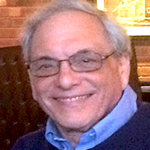
Question #1: “The greatest challenge to companies handling combustible dust in the U.S. is the relatively new requirement in NFPA combustible dust standards to conduct a combustible Dust Hazard Assessment (DHA) for every process/equipment/area in which combustible dust is handled or processed. This requirement is a major financial burden for many companies, particularly because of the limited number of personnel with the training and experience to conduct these DHAs. There is a potential for people and organizations with limited experience and understanding of combustible dust hazards and protection options to do these DHAs at a lower cost than more qualified people, producing results of questionable applicability and effectiveness. Another aspect of this issue is the absence of federal regulations clarifying what is required in an effective DHA, and what are the corresponding required minimum protection measures (or risk reduction levels) that companies must implement.”
Question #2: “There is a great deal of excellent dust explosion research being conducted and published, but the biggest challenge is the difficulty in applying, interpreting, and generalizing the results of this research. The difficulty is the large differences in combustion and related phenomena associated with different types of combustible materials and widely different particle sizes and morphology. For example, combustible metals undergoing surface or subsurface combustion exhibit fundamentally different phenomena than materials that undergo vapor phase combustion after melting or pyrolysis.
Another example is the fundamentally different ignition and burning characteristics of nanoparticles and much larger materials. This is important even for micron sized dust because it is becoming apparent that the smaller particles in a dust of varying size probably govern the dust ignition likelihood and rate of burning/flame propagation. Thus, research results (both experimental and theoretical) for dusts with a given size distribution may not be applicable to similar materials with a different distribution, even if they have the same volume median particle size.”
About Dr. Zalosh: Robert is Principle Consultant at Firexplo in the Greater Boston Area and holds a Master’s in Mechanical Engineering from the University of Rochester and a PhD in Mechanical Engineering from Northeaster University. Dr. Zalosh has 35 years experience in industrial fire and explosion protection and is a Professor Emeritus in Fire Protection Engineering at Worcester Polytechnic Institute.
Connect with Robert: Dr. Zalosh can be contacted directly through his LinkedIn Profile and more information on the services of Firexplo can be found be emailing [email protected].


Rocco Mariani
Question #1: “To perform an efficient full process hazard analysis that will help them put in place the appropriate safety procedures and choose the right equipment in the working areas.
Typically what they will need to do to prevent working areas to become hazardous locations, then evaluate the hazards they still face handling combustible dusts and choose the proper equipment that will prevent combustible dust hazards.”
Question #2: “To have a precise view of all potential hazards in the working areas. Properly understand each party responsibility so end users do not only rely on manufacturers of equipment in order to supply them with equipment that will prevent all hazards which may occur in the working areas.”
About Mr. Mariani: Rocco is CEO and founder of the Tiger-Vac Group in Dania, Florida which specializes in design, manufacturing and sales of Certified Explosion Proof industrial vacuum cleaners. Mr. Mariani has over 40 years experience in equipment production for explosive areas within industry.
Connect with Rocco: Mr. Mariani can be contacted directly through his LinkedIn Profile.

Dr. Russel Ogle
Question #1: “The single most important problem facing industries handling combustible dust continues to be hazard communication. Combustible dust explosions and fires continue to occur in workplaces where management and their employees were unaware of combustible dust hazards. A great deal of effort has gone into communicating hazard awareness to the industrial community, but more needs to be done.
One very promising development in communicating combustible dust hazards is the incorporation of technical safety knowledge into the engineering curriculum of some universities. Textbooks on chemical process safety and occupational safety are available which address combustible dust hazards from a generalist perspective, and books on dust explosion and fire fundamentals are available for those desiring a more in-depth exposure.”
Question #2: “The #1 difficulty in dust explosion/fire research continues to be the challenge of integrating research knowledge into combustible dust safety standards and guidelines. Combustible dust safety standards and guidelines tend to focus on empiricism. Combustible dust research tends to explore the complexity of dust explosions and fires as problems in multiphase, turbulent combustion. Bridging these two worlds is exceedingly difficult due to the disparate objectives, methodologies, and knowledge bases of these two communities. It is my belief that the effectiveness of combustible dust risk management based on safety standards and guidelines can be improved through the application of combustion science fundamentals. There is much work to be done in this regard and for this reason I think it is an exciting time to be involved in combustible dust research.”
About Dr. Ogle: Russel is Practice Director and Principle Engineer at Exponent Failure Analysis Associates in Warrenville, Illinois and holds a PhD in Chemical Engineering from the University of Iowa. Dr. Ogle has over 30 years experience working with industrial fires, explosions, and chemical releases and recently published a textbook on “Dust Explosion Dynamics” in 2016.
Connect with Russel: Dr. Ogle can be contacted directly through his LinkedIn Profile.


Scott Boersma
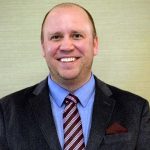
Question #1: “It is the intent here to not restate the obvious issue of education. Understanding the regulations and standards for each combustible dust application as it applies to each industrial sector is critical to mitigating risk.
That being said, I’ve travelled to more plant locations than I can remember, or count. I’ve visited customers in almost every industry. The response from most of the companies that I’ve visited is that they would LIKE to comply, but the challenge is knowing HOW to comply, and getting the buy-in from their employees TO comply. Once getting past the education process and formulating a Dust Hazard Analysis, it’s critical to understand all of the resources that will be required for mitigating all of the safety risk. Often the client thinks it’s a huge capital investment, however, it’s important to reiterate others sentiments that most issues occur due to general lack of housekeeping, which is a relatively low in capital requirements.
Changing the mindset, culture or belief of the employee is the biggest challenge to overcome. Most employees believe that if they keep doing things the same way they will be safe. The question of “why should they have to do more work”, and the statements that “we don’t have the resources for that” or “there’s no way we will allocate money to something with no ROI”, is a very reactive approach in an area of safety that truly requires proactive thinking.
It’s sometimes the belief that if things have been done in a particular way for a long period of time, it must be ok to continue doing. To increase our education, leaders should challenge back that we are not doing it the same way, but in fact we are doing things bigger, faster, and more efficient with less people to monitor issues. As companies continue to grow in scale, it is important to place top of mind that minimizing resources in production areas (such as personnel or proper cleaning tools) may increase risk by allowing for less attention to daily responsibilities. Companies have to keep plants clean, or it will catch up to them. Leaders of companies must step forward and set an example that sets the tone for the future of employees. That culture should include safety for every individual in the plant, not in statement, but in practice. Our mission must be to send everyone home the same way that they came to work each day.”
Question #2: “Networking is key, as knowing who to trust for information often times can be very challenging. When companies initially engage in researching this subject, typically their intent is pure and founded. They are choosing to understand the risk and prioritize the issues. The quality of information that they observe will determine their evaluation of the level of importance among other issues in their decision making process for allocating resources to combustible dust. It is critically incumbent upon those of us providing information to produce accurate, detailed and unbiased facts.
Additionally, many fires and combustible dust related issues are NOT reported. As such, It is unknown how many incidents actually occur or to how great of an extent the risks really are. What we know is that when there are combustible dust incidents they can heavily impact entire communities, towns, counties and industries. Our goal should be safety, not in an average sense, but for each and every individual risk. The more we are able to understand the risks, the more likely we will be able to effectively and efficiently mitigate them moving forward.”
About Mr. Boersma: Scott is Chief Operating Officer/Chief Sales Officer at Delfin Industrial Corporation in Plymouth, Minnesota, which specializes in design and construction of wet and dry industrial vacuums certified under ATEX and NFPA standards. Mr. Boersma has over 17 years experience in the baking and food processing industries, and industrial hygiene applications.
Connect with Scott: Mr. Boersma can be contacted directly through his LinkedIn Profile or by emailing [email protected].


Dr. Scott Davis
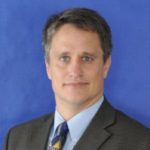
Question #1: “Understanding the risks associated with their process, and ways to help mitigate and control these risks”
Question #2: “The scales necessary are quite large and can be costly. For example, proper venting for light metal dusts (high flame temperature) requires a new set of tests at scales up to 20-40 m3 vessels.”
About Dr. Davis: Scott is President and Principle Engineer at GexCon US Inc. in Washington D.C. and holds a PhD in Mechanical and Aerospace Engineering from Princeton University. Scott is an Adjunct Professor within the Chemical Engineering department at Texas A&M University and has 25 years experience in Research and Consulting related to reactive systems, gas and dust explosions.
Connect with Scott: Dr. Davis can be contacted directly though his LinkedIn Profile.


Dr. Sam Mannan
Question #1: “Absence of plant specific dust explosion knowledge and training guide.”
Question #2: “Dust explosions being a very complex phenomenon, simulating the boundary conditions of an industrial-scale observation/incident in a laboratory is very difficult. Therefore, discrepancy exists between experimental methods, tools, and approaches. This discrepancy has led to the absence of a reliable tool/model that can be used to reasonably scale-up laboratory observations for industrial applications.”
About Dr. Mannan: Sam is a Regents Professor and Director of the Mary Kay O’Connor Process Safety Centre at Texas A&M University and holds a MS and PhD in Chemical Engineering from the University of Oklahoma. Dr. Mannan has over 30 years experience in Process Safety and Loss Prevention and has received numerous awards including the American Institute of Chemical Engineers Service to Society Award.
Connect with Sam: Dr. Mannan can be contacted directly through his LinkedIn Profile or through his universities website.

Canada
Dr. Luc Bauwens
Response: “It seems to me one big issue is operations which don’t recognize that their dust is actually explosive. I have heard of case studies/accidents involving flour, talc, and aluminum dust. This said, flour may be better recognized as combustible. Also, people may not recognize that combustible dust may accumulate in ventilation dusts. Where no one notices until something happens.”
About Dr. Bauwens: Luc is a professor in Mechanical and Manufacturing Engineering at the University of Calgary in Alberta, Canada and holds a MASc. from the University of British Columbia and a PhD from University of California at Berkley. His current research focuses on CFD modeling of combustion and reactive flow and he had held positions on the board, as vice-president and as president of the Institute for Dynamics of Explosions and Reactive Systems.
Connect with Luc: Dr. Bauwens can be contacted directly through his research website.

Luke Morrison
Response: “In response to your inquiry I would suggest that one of the problems facing industries with dust hazards is a means for defining a hazard, or demonstrating that there is not a hazard requiring protection. This problem is one of evaluating marginal conditions. A small dust collector that captures fugitive dust in such small quantities that there is never sufficient to create an explosive mixture. Better information on dusts with KSt of 50 or less. What is the hazard? What level of protection is required? How do we demonstrate adequate level of safety?”
About Mr. Morrison: Luke is President and Principal Engineer at Professional Loss Control in New Brunswick, Canada. He has over 30 years experience in protecting against industrial fire hazards and is a member of the NFPA Explosion Prevention Committee.
Connect with Luke: Mr. Morrison can be contacted directly through his email [email protected].

Martin Clouthier
Question #1: “The NFPA combustible dust-related standards (NFPA 652, 484, 654, 664, and 61) now include retroactive requirements to perform dust hazard analyses within a specified period of time after their effective dates. Operators in the US are scrambling to find qualified individuals to perform this work. In Canada, the biggest problem is combustible dust hazard awareness. This issue is not improved by the incomplete and brief treatment of combustible dust hazards found in the National and Provincial Fire Codes. In Canada, it’s even more difficult to find knowledgeable safety practitioners.”
Question #2: “The volume-normalized maximum rate of pressure rise and explosion index KSt are not fundamental properties—they are determined under prescribed test conditions that may be conservative, but do not reflect plant conditions. Use of computational fluid dynamics (CFD) to evaluate scenario-specific conditions is promising because CFD uses fundamental material properties. These models need further development before they can be reliably used for the design of dust explosion protection systems.”
About Mr. Clouthier: Martin is a Corporate Director at Jensen Hughes and the Practice Leader for Dust and Flammability Testing and Consulting Services. He and holds a Master’s degree in fire protection engineering from Worcester Polytechnic Institute and is a Ph.D. Candidate in chemical engineering at Dalhousie University. Mr. Clouthier has more than 22 years of experience as a safety practitioner and has been a member of the NFPA Technical Committee for Explosion Protection Systems (NFPA 67, 68, and 69) since 2005.
Connect with Martin: Mr. Clouthier can be contacted directly through his LinkedIn profile and more information on his companies’ services can be found by emailing [email protected].



Dr. Paul Amyotte
Question #1: “The #1 problem facing industries handling combustible dust is to recognize and effectively remediate the hazards and ensuing risks posed by the bulk powders being processed. This is as much a social science/management problem as it is a natural science/engineering problem. Safety culture is key to addressing all process safety issues – none more so than dust fires and explosions.”
Question #2: “The #1 difficulty in dust explosion/fire research is ensuring the relevance of laboratory-scale (20-L) findings to industrial-scale applications. Focused research at the intermediate-scale (1-m3) is desirable in this regard.”
About Dr. Amyotte: Paul is a Professor in the Department of Process Engineering & Applied Science at Dalhousie University in Nova Scotia, Canada, and holds a M.Sc in Chemical Engineering from Queen’s University and a PhD in Chemical Engineering from the Technical University of Nova Scotia. Dr. Amyotte has over 30 years experience in dust explosion research, is the editor of the Journal of Loss Prevention in the Process Industries, and recently published An Introduction to Dust Explosion: Understanding the Myths and Realities of Dust Explosions for a Safer Workplace in 2013.
Connect with Paul: Dr. Amyotte can be contacted directly through his university website.

Australia
Jim Munro

Question #1: “Understanding the risk the combustible dusts presents and the importance of good housekeeping to reduce that risk. The build up of dust not only ensures the risk is present but can also increase the risk, for example by causing increased heating in electrical enclosures due to the blanketing effect.“
Question #2: “Ensuring better cooperation between the researchers and the development of international standards on combustible dust. I have seen both sides. I attended and presented at a conference in Dalian, China last year. I saw papers from lots of people doing interesting research. But in my role (until recently) as Chairman of IEC Committee TC 31, Equipment for Explosive Atmospheres, I struggled to get good involvement of researchers in our international standards development.“
About Mr. Munro: Jim is Managing Director at Jim Munro International Compliance Pty Ltd in Blaxland, Australia. Mr. Munro has over 35 years experience with equipment for explosive atmospheres including being Chairman of the International Committee IEC TC 31, and is currently enrolled as a PhD student at the University of Sydney.
Connect with Jim: Mr. Munro can be contacted directly through his LinkedIn Profile and more information on his services can be found by emailing [email protected].


Ken Schafer
Response: “In response to your questions below, we find here in Australia that the lack of knowledge, particularly with regards to the coal face salesperson. This is because the majority of Vacuum systems are sold through cleaning distributors, often small family owned organisations who carry a full range of cleaning supplies.
Australia unfortunately needs to catch up and needs regulation and enforcement.“
About Mr. Schafer: Ken is Managing Director at Australian Industrial Vacuum (AIV) in Melbourne, Australia, and has over eight years experience in specialized and industrial cleaning systems. AIV offers a broad range of industrial vacuum products and is a sales office for DuroVac Industrial Vacuums.
Connect with Ken: Mr. Schafer can be contacted directly through his LinkedIn Profile and more information on AIV can be found by emailing [email protected].


Robert (Bob) Hurnall
Response: “One of the biggest problems with combustible dusts is most companies do not understand that their dusts are combustible or if you mention that it may be a hazard they immediately think biological.
About Mr. Hurnall: Robert is Owner/Director of B & L Electrical Projects Ltd. in Brisbane, Australia. Mr. Hurnall has over 30 years experience as an Electrical Tradesman in Hazardous Area Compliance.
Connect with Robert: Mr. Hurnall can be contacted directly trough his LinkedIn Profile and more information on B & L Electrical Projects Ltd. can be found from the companies contact form.


The Netherlands
Adrie van Beek

Question #1: “Most of these companies tell you that their product isn’t a combustible dust and they are in a complete denial!“
Question #2: “It is very hard to reproduce test results because there are so many variables. It is also difficult to get good information about the properties of dusts/powders.“
About Mr. van Beek: Adrie is an ATEX Specialist at Trinseo in the Hague Area, The Netherlands, and Owner of T4A Consultancy and Service Bureau. Mr. van Beek’s experience includes inspection of Zone 0 and Zone 1 explosive areas and providing technical advice and training on ATEX requirements.
Connect with Adrie: Mr. van Beek can be contacted directly through his LinkedIn Profile.


Dr. Arief Dahoe
Question #1: “The #1 difficulty in Europe’s industrial setting is compliance with the ATEX-Directives when handling combustible dusts.”
Question #2: “The #1 difficulty in dust explosion research is the effect of turbulence on flame propagation during dust explosions.”
About Dr. Dahoe: Arief is owner of Delf Explosion Solutions in The Netherlands and holds a MSc in Chemical Engineering and PhD in Flame Propagation and Explosion Modeling from Delft University of Technology. Dr. Dahoe lectured in Hydrogen Safety from 2004 to 2016 at the University of Ulster and established the worlds first postgraduate degree programme in Hydrogen Safety Engineering.
Connect with Arief: Dr. Dahoe can be contacted directly through his LinkedIn Profile or through the Explosion Wiki page at Delft University.


Kor Kapma
Question #1: “A problem is that many companies are no longer familiar with how to handle combustible powders themselves. They know how to produce, but not how to deal with deviations and breaking out of powder. The sense of urgency and the sense of danger. All Practical knowledge is lost on the shopfloor, and certain in the management. The companies have changed over the years from knowledge-driven organizations into a figure driven (bank) organizations.“
Question #2: “Afterwards all piece are burned, and it is difficult to figure out where the start has been. Examples of mismatched cable glands for cables is not traceable because the cables are all burned. Also, minor incidents are not properly analyzed so that the root cause for a real fire based on the history is unknown.“
About Mr. Kapma: Kor is an Explosion Safety Expert and Projects Manager at Relco Europe in Friesland Province, The Netherlands. Mr. Kapma is IECEx certified and has over 15 years experience working in the food processing sectors.
Connect with Kor: Mr. Kapma can be contacted directly through his LinkedIn Profile and more information about his services can be found by emailing [email protected].


Norway
Dr. Rolf Eckhoff
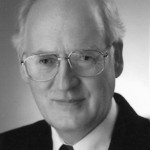
Response: “Section 9.4 (pp. 636-640) in the 3rd. edition of my book ‘Dust Explosions in the Process Industries‘ (Elsevier, 2003) presents several problem areas. The section has the following headline: ‘Status and outstanding problems in testing dust ignitability and explosibility’, and presents some challenges that are not yet satisfactorily resolved.
In general the main outstanding challenge still is to provide methods than enable us to predict what can happen in reality in industry. This applies both to ignition processes and the consequences of accidental explosions.”
About Dr. Eckhoff: Rolf is a professor emeritus in the Department of Physics and Technology at the University of Bergen, Norway. He holds a PhD (dr.techn.) from the University of Trondheim, Norway, and a DSc (Eng) from the University of London, UK. He has over 50 years of experience in dust explosion research, and is the author/co-author of more than 150 technical/scientific publications and about 130 research reports (powder technology and industrial explosion hazards). He is also the author of two major textbooks (Elsevier) on explosion hazards in the process industries”
Connect with Rolf: Dr. Eckhoff’s contact information and select scientific papers and technical reports can be found on his university homepage.

Dr. Trygve Skjold
Question #1: “Risk management, and in particular risk awareness, seem to be the primary challenge with respect to dust explosions in industry. Too often we hear about ‘surprising’ disastrous dust explosions, whereas most of them in fact are repetitions of familiar scenarios from previous accidents. Many of the worst dust explosion accidents could have been prevented with ‘simple’ housekeeping.”
Question #2: “The primary challenge for the research community is perhaps the extrapolation from laboratory-scale experiments to the actual industrial situation – both with respect to spatial scale and complexity (i.e. initial and boundary conditions). Most of the academic work entails laboratory-scale equipment, and results related to reactivity from the primary piece of standardized equipment available, i.e. the 20-litre vessel, are inherently difficult to convert into fundamental properties of the dust sample (characterized by type of dust, particle size distribution, moisture content, etc.) due to the transient nature of the test procedure.
A closer look at the comparison of results between the 20-litre and the 1-m3 vessel shows that a good fit only exists for the St-3 dusts, whereas the results for St-1 and St-2 typically fall within a factor two. This implies that the uncertainties in experimentally determined KSt values are significant, and any derived parameters (e.g. the laminar burning velocity frequently used as a measure for mixture reactivity) will inherit this uncertainty. It is not obvious how the research community can progress in this area, since the paradigm of KSt values and standardized tests in closed vessels is very well established in industry.”
About Dr. Skjold: Trygve is R&D Director at Gexcon AS in Bergen, Norway, and holds MSc and PhD degrees in Process Safety Technology from the University of Bergen. Dr. Skjold has over 15 years experience from experimental investigations and modeling of dust explosion phenomena.
Connect with Trygve: Dr. Skjold can be contacted directly through his LinkedIn Profile.


Germany
Dr. Johannes Lottermann
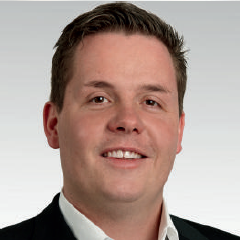
Question #1: “Due to the lack of truly EX-perienced and self-confident EX-perts the application of Explosion Safety is unfortunately becoming more and more an application of standards rather than an engineered approach. I´m inspecting plants globally carrying out DHA according to NFPA or risk assessments against ATEX and can confirm, that a lot of safety concepts in the industry are just to be seen as “bringing the plant in compliance” instead of “making the process safe”.
I do frequently see overprotected vessels and even protected equipment that is not at a realistic risk at all – the result is, that explosion protection upgrade projects of existing plants are becoming longterm projects as they are often too costly or complicated. Recently, I inspected a Canadian plywood mill where the client was told by the local AHJ to protect the silo that doesn´t even contain dust at all. What the AHJ hasn´t seen, is that the venting devices of the dust collectors were facing the production building and that explosion isolation was missing. Regardless of the supplier for explosion protection: Approved Solutions are available but have to be engineered and carefully designed by real EX-perts so that explosion safety is understood as “making the process safe” again.“
Question #2: “Nowadays research in the field of dust fires and explosions are typically only undertaken by companies in the interest of improving their products. 30 and even just 20 years back from now research was done to understand these phenomenon more in general. Due to lack of financial resources at public research centers but also the rather “egoistic” focus in research topics, a lot of unanswered questions and existing problems cannot be solved.
Luckily associations such as IND EX e.V. (Intercontintental Association of Experts for Industrial Explosion Protection) is working against this trend as the membership fees are reinvested in research projects to deal with questions that arise in the daily industrial practice when handling combustible dusts. IND EX e. V. sponsored for example the research to investigate the influence of the length to width ratio of explosion venting devices to its venting efficiency – IND EX e.V. also supported the research by Wuppertal University to determine the behavior of smoldering fires in fluidized dust layers in order to improve the so called burning index. The EX-community should more and more consider such mutual research projects and focus on more risk-appropriate protection concepts rather than over-engineered approaches.”
About Dr. Lottermann: Johannes is Director of Explosion Safety at REMBE Safety & Control in Brilon, Germany and holds a PhD in Safety Engineering at the University of Wuppertal. Dr. Lottermann has over 11 years experience in fire and explosion safety and is Chairman of the Scientific Technical Committee at the Intercontinental Association of Experts for INDustrial EXplosion Protection (IND EX).
Connect with Johannes: Dr. Lottermann can be contacted directly through his LinkedIn Profile and his email [email protected]. More information on IND EX can be found by emailing [email protected].



Dr. Ulrich Krause

Question #1: “In my opinion, clearly applying existing knowledge on ignition and explosion phenomena to industrial situations. A famous proverb we have in Germany about information flow in a large company, say company X, goes: If X knew what X knows, they would perform much better. In a similar way – this is my Impression – this applies to the dust handling industry sectors too.”
Question #2: “Be it #1 or not, a big difficulty lies in modeling dust explosions. What we have is a two-phase, mostly turbulent flow with chemical reactions – undoubtedly one of the most complex problems in engineering science. While in the late eighties/early nineties when the first attempts for CFD-modeling of dust explosions were made “the community” was highly sceptical (“I don’t believe in these computers.”), a few years later the tide turned over-enthusiastic (“We don’t need experiments any more.”)
Now the modeling activities are somehow stagnating, just a few CFD papers on the explosion conferences. We’ll see. Having grown up with CFD modeling I see this as a nice field of future activities for my own group.”
About Dr. Krause: Ulrich is a Professor in the Institute of Apparatus and Environmental Engineering at the University of Magdeburg and holds a PhD from TU Dresden. Dr. Krause has over 25 years experience in researching multiphase flow and is currently working on projects involving control and risk of smoldering fires and fuel storage in explosive atmospheres.
Connect with Ulrich: Dr Krause can be contacted directly through his LinkedIn Profile.

Hungary
Arpad Veress
Question #1: “No detailed information about the dust itself. In most of the cases we experience, certain industries run their production in a way that they have no information on about 70% of their dusts used in daily bases.”
Question #2: “1) The dust may have a different nature with regards to geographical location. 2) Many believe the dust explosion protection is somehow similar to gas explosion protection. They are not aware that dust is even more dangerous. 3) Many believe that any installation in a possible hazardous area with dust can be protected by a high IP solution”
About Mr. Veress: Arpad is Managing Director of ExNB Certification Limited, EPDS Software Development Ltd., RobEx Automatizari SRL, and STAHL Hungary Ltd. in Budapest, Hungary. Mr. Veress is a certified ATEX and IECEx auditor and his company ExNB Certification Limited is an approved notified body in the EU for compliance of equipment and protective systems in explosive atmospheres.
Connect with Arpad: Mr. Veress can be contacted directly through his LinkedIn Profile and more information about ExNB be be found by emailing [email protected].


Italy
Dr. Luca Marmo
Question #1: “I’m involved in ATEX risk assessment for private companies, mainly in case of the presence of dusts. The main practical problem we encounter is to establish whether a dust can represent a real explosion risk. Of course we have a lot of standard tests to assess almost every explosible characteristic of a dust, but we misrepresent their real behavior in the industrial environment.
As an example, I have recently completed a research program with a group of textile companies in the north of Italy. Many of the “dust” collected (all non traditional, as they have a marked fibrous nature) are explosible, but many of them can hardly be suspended to form a cloud. Another example is the case of dusts or particulate materials having a broad particle size distribution. The task of properly assess the explosion risk in those cases is at the moment completely open in my opinion”
Question #2: “I think this is strictly connected to the previous point. We still miss proper combustion and ignition models able to predict the behavior of a broad PSD dust and/or mixtures of different dusts, which is the majority of the cases industry.”
About Dr.Marmo: Luca is an Assistant Professor in the Department of Applied Science and Technology at Politecnico di Torino in Italy and holds and PhD in Chemical Engineering from the same university. Dr. Marmo is Director of the Dust Explosion Laboratory at Politecnico Di Torino with over 20 years of experience in Industrial Process Safety, and is a Partner at MFCforensic, a division of TECSA specializing in accident investigation.
Connect with Luca: Dr. Marmo can be contacted directly through his LinkedIn Profile or through his universities website.


Czech Republic
Dr. Bretislav Janovsky
Question #1: “By my opinion, the #1 problem for industries handling combustible dust is understanding the hazard and importance of its prevention and mitigation of consequences. Most of the people involved do things because they must (directives of EU standards) but not because they believe that it is necessary.”
Question #2: “I, unfortunately, think that we do not have effective dust explosion/fire research in Czech because we do not have recent topics and the few people involved are separate instead of cooperating.”
About Dr. Janovsky: Bretislav is Deputy Director at OZM Research in the Czech Republic and holds a PhD in Organic Technology from the University of Pardubice. Dr. Janovsky’s research interests include experimental testing for explosive materials and analysis of explosion consequence with a specific focus on Boiling Liquid Expanding Vapour Explosion (BLEVE).
Connect with Bretislav: Dr. Janovsky can be contacted directly through his LinkedIn Profile.


Japan
Dr. Masaharu Nifuku
Question #1: “The reliable and economical ways (methods) to prevent the dust explosion. Powders are main items of industrial activities for powder production companies. Companies have to handle powders as materials, interim products and final products. Also, dusts are often accompanied with industrial activities. Accordingly, the prevention of dust explosion is inevitable. However, there is no satisfactory tools so far. There still exists dust explosion accidents. The prevention equipment are often very expensive and malfunctioning sometimes. The prevention techniques need to be affordable and they sure have to work when it is necessary.”
Question #2:“To generate uniform distribution of particles (to generate homogeneous dust cloud). It is really important to disperse particles homogeneously. Without the uniformity, it is difficult to analyse accurately the explosibility factors (MEC, MIE, AIT, LOC, etc). Also, mathematical modelling leads to unsatisfactory results.”
About Dr. Nifuku: Dr. Masaharu Nifuku is a visiting researcher at the National Institute of Advanced Industrial Science and Technology (AIST) and holds a PhD in Engineering at Kyushu University in Japan. Dr. Nifuku has more than 50 years experience researching dust explosion, static electrification of dusts and combustible liquids, electrostatic hazards and accidents, gas explosion, and exhaust gas cleaning by electrical discharge. He is an Honourary Professor at the Dunaujvaros Polytechnic of Miskolc University (Hungary) and a Licensed Occupational Safety Consultant.
Connect with Masaharu: Dr. Nifuku can be contacted directly at [email protected].

Brasil
Estellito Rangel, Jr.
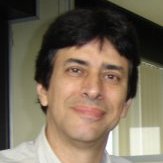
Question #1: “In Brasil, the #1 problem is the lack of specialized knowledge on explosion prevention of combustible dusts.
An explosion incident occurred on 10/18/2013 at the Copersucar Sugar Terminal (TAC) in the Port of Santos, resulting in a fire that reached about 180 thousand tons of raw sugar. At 300 meters from the fire it was possible to feel very strong heat and smell.
The operation of the Copersucar Sugar Terminal was only restarted on a limited basis, three months after the event. The rebuilding of the warehouses, seven months later, allowed the boarding level of four million tons to be restored, less than half the capacity that had been projected in that expansion. The accident caused serious logistical problems, since about 60% of the Brasilian raw sugar production is disposed of by the Port of Santos. Overall the accident pushed raw sugar prices to the highest level on the New York Stock Exchange since January 2013.
In Brasil, there are legal requirements applied to silo operations, such as NR-31. These stipulate mandatory prevention of explosion risks, fires, mechanical accidents, asphyxiation and risk resulting from exposure to chemical, physical and biological agents at all stages of silo operation. However, one weak point is area classification, as the majority of companies have no reliable documents defining the areas where potential explosive atmospheres can occur. This is further complicated as the Ministry of Labor’s prosecutors are not trained on explosion prevention principles. As such, it is estimated that the NR-31 requirement is rarely verified on government inspections, which demonstrates the need for more specialized knowledge.”
Question #2: “In Brasil, the first laboratory specializing in analysis of combustible dust was opened only in 2013, and it is expected to take some time until consolidated knowledge on research of dust explosions is matured.
All existing installations were built considering data from foreign literature, which probably induced plant designers to consider different dust characteristics than used in the facility. This will likely cause some implied risk until the dusts are properly characterized.”
About Mr. Rangel: Estellito is a Senior Consultant on Area Classification at the Brasilian Association for Accidents Prevention – ABPA, a certified Ex auditor, member of Brasilian Standards Association – ABNT, and a Brasilian representative at International Standards IEC 60079 series – Explosive atmospheres.
Connect with Estellito: Mr. Rangel can be contacted through his LinkedIn Profile or directly at [email protected].


United Kingdom
Alan Tyldesley

Question #1: “A common problem is to persuade those handling low value products to invest enough in making their plant dust tight. It is nonsense to spend much time and effort sweeping up dust from ledges high up in a building, when they really need to find and seal the source of dust release. Dust layers at the highest part of the building tends to be the finest and driest; don’t judge the risk by looking at the floor. Get a ladder and collect your sample from the top of a light fitting.”
Question #2: “Your earlier responses have captured many issues I recognise, but I would like to add my favourite. As an independent outsider looking at existing process plant, the biggest uncertainty usually comes from trying to assign a pressure rating. Dust handling plants are very rarely built to pressure vessel codes and often the containment system is not built to any code at all. Some pressure rating however is needed for venting or suppression. The methodology for doing this is very weak, and has not advanced much since the book published in the UK by the I Chem E in 2000 ‘Process Vessels Subject to Explosion Risk‘ following HSE funded research. There is scope for some really useful further work here. See ISBN 085295 428 X.”
About Mr. Tyldesley: Alan is Owner of Tyldesley Explosion Consultancy Ltd. in Lancashire, United Kingdom. Mr. Tyldesley has over 30 years experience in industrial fire and explosion hazards and was formerly chair of the BSI technical committee EXL/23 “Explosion and Fire Precautions in Industrial and Chemical Plant“.
Connect with Alan: Mr. Tyldesley can be contacted directly though his LinkedIn Profile and more information on the services of Tyldesley Explosion Consultancy Ltd. can be found by emailing [email protected].


Attribution

Icon made by Vectors Market from www.flaticon.com

Icon made by Popcorns Arts from www.flaticon.com
Share Your Feedback
You can share this content or your own response in two ways:
1) Use the share buttons below to distribute across social media
2) Share your own thoughts using the comments section at the bottom of the page
